 Kingdom of Italy (1943-1954)
Kingdom of Italy (1943-1954)
Medium Armored Car – 102 Built
By late 1941, the crews of the AB41 armored cars had reported many problems and issues with the vehicle. In order to solve these and to provide the Regio Esercito (Eng: Italian Royal Army) with a long-range reconnaissance armored car suitable for use in the desert, in early 1942, the lighter and faster AB42 was designed by FIAT-SPA and Ansaldo.
The cancellation of the AB42 project due to the Axis defeats in the North African Campaign in late 1942 did not discourage the Italian designers. In a few months, they designed a new vehicle, the AB43, on the same chassis as the AB41 but with a new turret and a new and more powerful engine.
The AB43 was immediately tested but the Royal Italian Army did not have time to start production due to the Armistice of Cassibile signed on September 8, 1943. In late November of the same year, production started, though this time for the German Army, who really appreciated the new armored car and produced a total of just over 100 until 1945.
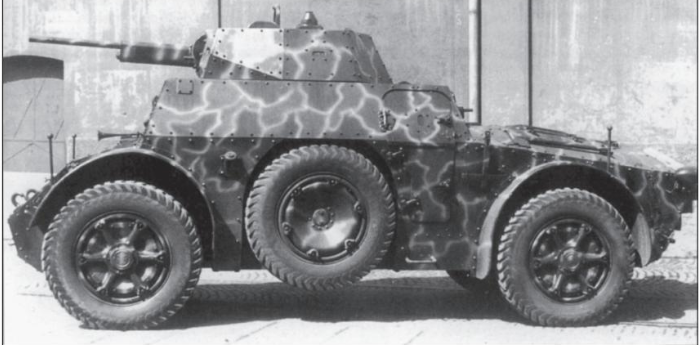
History of AB40 and AB41 armored cars
During the First World War, the Royal Italian Army was impressed by the performance of its armored cars and, after the war, it kept them in service alongside the cavalry and the companies of Bersaglieri motorcyclists. The only model of an armored car developed and produced until 1937 was the FIAT 611, 46 of which were made for the Corpo Guardie di Pubblica Sicurezza (Eng: Public Security Corps) and requisitioned by the Army in 1935 for the Second Italo-Ethiopian War.
To replace the old Lancia 1ZM and FIAT-Terni-Tripoli armored cars produced during the First World War and the unsuccessful FIAT 611, in 1937,the Italian companies FIAT and Ansaldo began the design a new armored car for use in Africa by the Royal Army and the Polizia dell’Africa Italiana or PAI (Eng: Italian African Police).
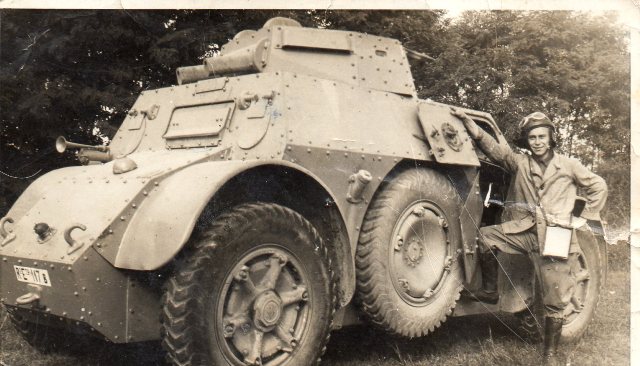
The first project presented in May 1939 was the AB40, an armored car of a modern design, weighing 6.8 tonnes, with a double steering system, with a Mod. 1940 turret armed with twin 8 mm machine guns and a third 8 mm in the hull, 9 mm armor on all sides and on the turret and a FIAT-SPA ABM 1 6-cylinder petrol engine that provided a top speed of 78 km/h and a range of 400 km. 5 pre-series and 24 standard vehicles of this first version, which went into production in January 1941, were produced. Due to its light armament, it was replaced by the 7.4 tonnes AB41 with the new Mod. 1941 turret armed with a 20 mm Breda cannon and two 8 mm machine guns. Total AB41 production was 435 units with the ABM 1 engine and 232 with the new 88 hp FIAT-SPA ABM 2 engine, which increased the speed to 80 km/h.

History of the Prototype
At the beginning of 1942, the High Command of the Royal Italian Army requested FIAT and Ansaldo to better adapt the AB41 armored car for service in the North African Theatre. A new version of the AB armored car produced in a single prototype in 1942 was the AB42, developed exclusively for use in the North African environment. The superstructure was completely redesigned with more inclined 8.5 mm armor and more space for the crew. The 8 mm rear machine gun was removed, as was the dual steering system, reducing the crew to 3 men and the weight to 6 tonnes.
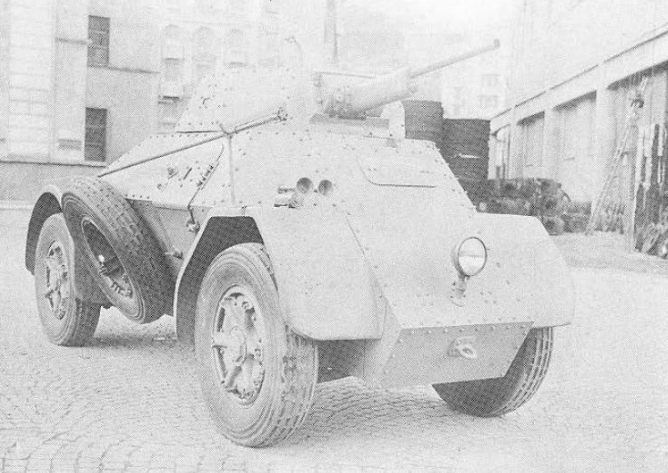
FIAT-SPA developed a more powerful engine, the FIAT-SPA ABM 3 6-cylinder, while Ansaldo developed a new superstructure and the new Mod. 1942 turret which was wider and lower than the Mod. 1941, armed with the same 20 mm cannon as the AB41. The new vehicle had a speed of about 90 km/h and a range of 460 km.
The prototype was presented at the Centro Studi della Motorizzazione (Eng. Centre for Motorisation Studies) in September 1942 and tests were immediately started to evaluate its effectiveness.
After the defeat during the Battle of El Alamein on November 11, 1942, the AB42 project was no longer considered a priority and was shelved.
Ansaldo then came up with a brilliant solution that saved the factory a lot of money, but at the same time allowed the Regio Esercito to have a vehicle to replace the AB41. To avoid financing the design and construction of new prototypes, Ansaldo’s technicians, together with FIAT, took the turret and the engine from the AB42 prototype and mounted them on the chassis of one of the last series AB41 hulls produced. After miraculously escaping an Allied bombardment at Ansaldo’s factory in Genoa, the vehicle and another prototype on the chassis of the AB armored car were presented at the Centro Studi della Motorizzazione in August 1943. The vehicle with the Mod. 1942 turret was accepted in service by the Royal Army under the name of AutoBlinda Mod. 1943 (Armored Car Mod. 1943) or more simply AB43 while the second vehicle, developed on the chassis of the AB41 but equipped with a two-seater turret armed with a powerful 47 mm anti-tank gun was renamed AB43 ‘Cannone’. The AB43 and the AB43 ‘Cannone’ were ordered in 360 units each, but the Cassibile Armistice of September 8, 1943 did not allow Ansaldo to deliver even one unit to the Royal Army. After a few months, on November 13 of the same year, production was resumed under the control of the Generalinspekteur der Panzertruppen (Eng. Inspector General of the Armed Forces) for the German Army, which considered the AB43 suitable for use, ordering 100 exemplars and canceling the order for the AB43 ‘Cannone’. In total, due to bombardments, scarcity of raw materials, delays in the supply of engines and other parts, and strikes of the workers who worked at the Ansaldo factory in Genoa, production was about 6 AB43 per month with a total of 60 armored cars produced in 1944 and 42 others completed by March 1945.
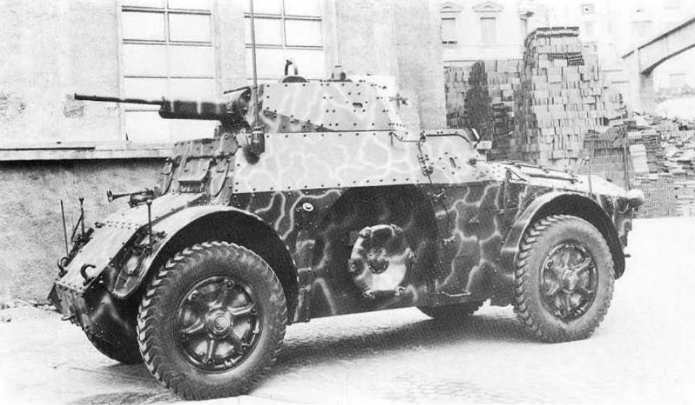
Production
After the Italian surrender and the German capture of the north of the country, the Generalinspekteur der Panzertruppen immediately evaluated the armored cars suitable for use in the Wehrmacht and ordered 100 AB43s. Production began in November 1943, but the first vehicles were delivered in the first months of 1944. Due to the lack of raw materials, coal, energy, delays in the delivery of engines, radios and guns and, finally the strikes of the workers, in the whole of 1944, only 60 AB43s were produced, i.e. only 5 per month. In 1945, production increased and, by the last days of March, the last 42 AB43 armored cars were delivered as per contract.
In a message dated April 9, 1945 sent from the headquarters of the Generalinspekteur der Panzertruppen in Milan to the Reichsministerium für Rüstung und Kriegsproduktion of Berlin, the Generalinspekteur der Panzertruppen proposed, following the completion of several contracts for the production of Italian vehicles, the conclusion of new contracts for three vehicles which the Wehrmacht considered suitable for the war: Panzerspähwagen AB43, >Sturmgeschütz M43 mit 75/46 and Panzerspähwagen Lince. According to this document, the Ansaldo factory in Genoa stated that it could produce 10 AB43s per month until August 1945, when it would increase production to 50 per month. It is obviously not certain that these figures were possible because the Ansaldo-Fossati factory in Genoa had been hit by heavy bombardments in early 1945.
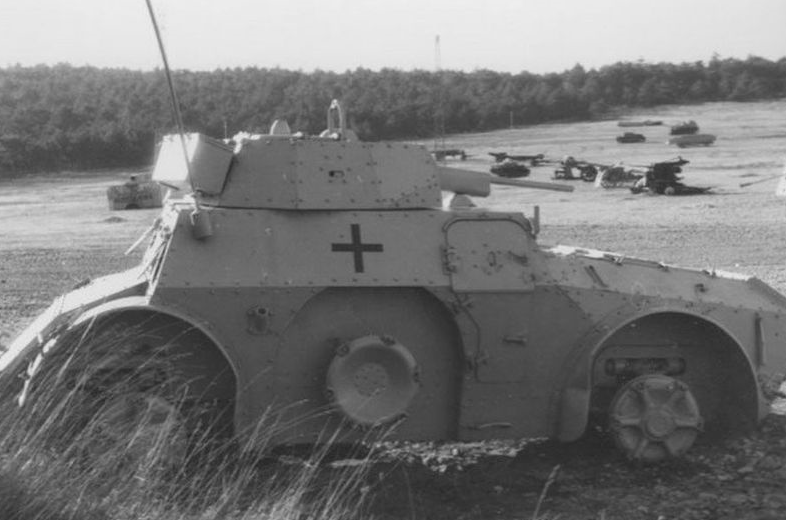
Design
Hull and armor
In general, for the tasks the armored car had to perform, the armor was more than adequate, protecting the crew from enemy infantry light weapons fire. The armor on the entire hull and superstructure consisted of bolted plates on an internal structure. This arrangement did not offer the same efficiency as a mechanically welded plate but facilitated the replacement of armor elements in case they had to be repaired. The hull was 9 mm thick at the front, sides, and rear while, on the Mod. 1942 turret, the bolted plates reached a maximum thickness of 22 mm on the front plate and 8.5 mm on the sides and back. The wheel fenders were also armored to prevent enemy fire from piercing the tires.
On the sides of the superstructure were the two armored access doors, divided into two parts that could be opened separately, first the upper one and then the bottom. The upper part had a slit so that the crew could use their personal weapons for close defense. On the left was mounted the antenna, which rested on a support at the back of the superstructure. In fact, to open the upper part of the left door, it was necessary to raise the antenna a few degrees.
On the right, two horns were placed at the front, a pickaxe was placed on the right side and the exhaust pipe, of the same model used on the last built AB41, was placed on the rear fender. The two spare wheels were placed in two fairings on the sides of the superstructure. In the “Ferroviaria” (Eng. Railway) version, the support in the fairing was modified to allow to attach two wheels on each side. Above the engine compartment, there was the engine deck with two air intakes on two hatches for engine maintenance. On the back, were the cooling grille and the two rear lights.
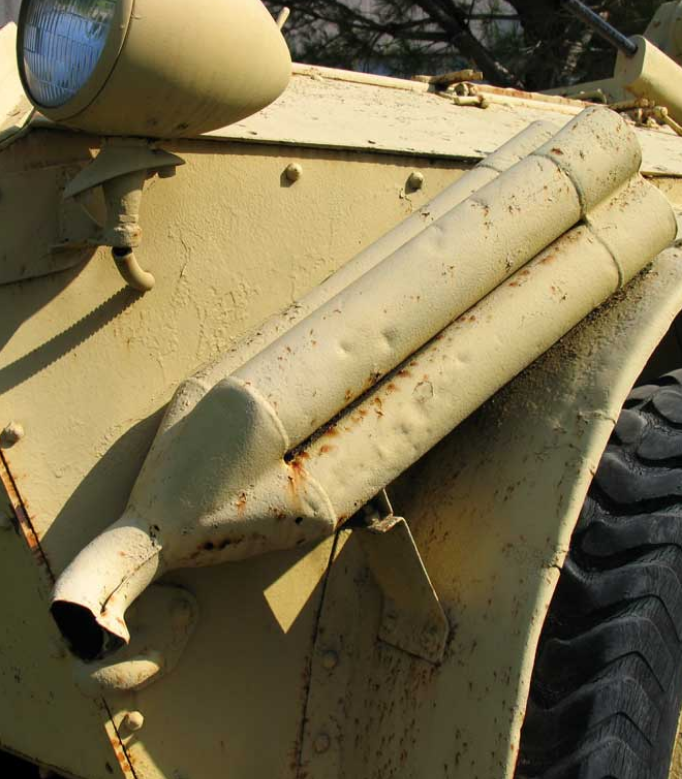
Turret
The Mod. 1941 turret mounted on the AB41, the same as mounted on the L6/40 light reconnaissance tank , was too narrow to easily load the 20 mm cannon. Its silhouette was very high, over 50 cm, and made it easier to locate the armored car even at a long distance. On the new AB43 armored car, the new lower and wider Mod. 1942 turret developed for the AB42 armored car was mounted.
The one-man turret had an octagonal shape with two hatches: one for the vehicle’s commander/gunner on the roof, divided in two separated doors, and the second one on the back of the turret, used to facilitate the disassembly of the main armament during maintenance operations. On the sides, the turret had two slits and on the roof there was an anti-aircraft machine gun support, the same used on the P26/40 heavy tank, and a periscope for the commander next to the hatch, which allowed him a 360° view of the battlefield. Due to the size of the turret, only 35 cm high, a protuberance was bolted on the turret roof, which contained the top-mounted curved box magazine of the coaxial Breda Mod 38 machine gun, allowing the cannon to reach a depression of -9°.
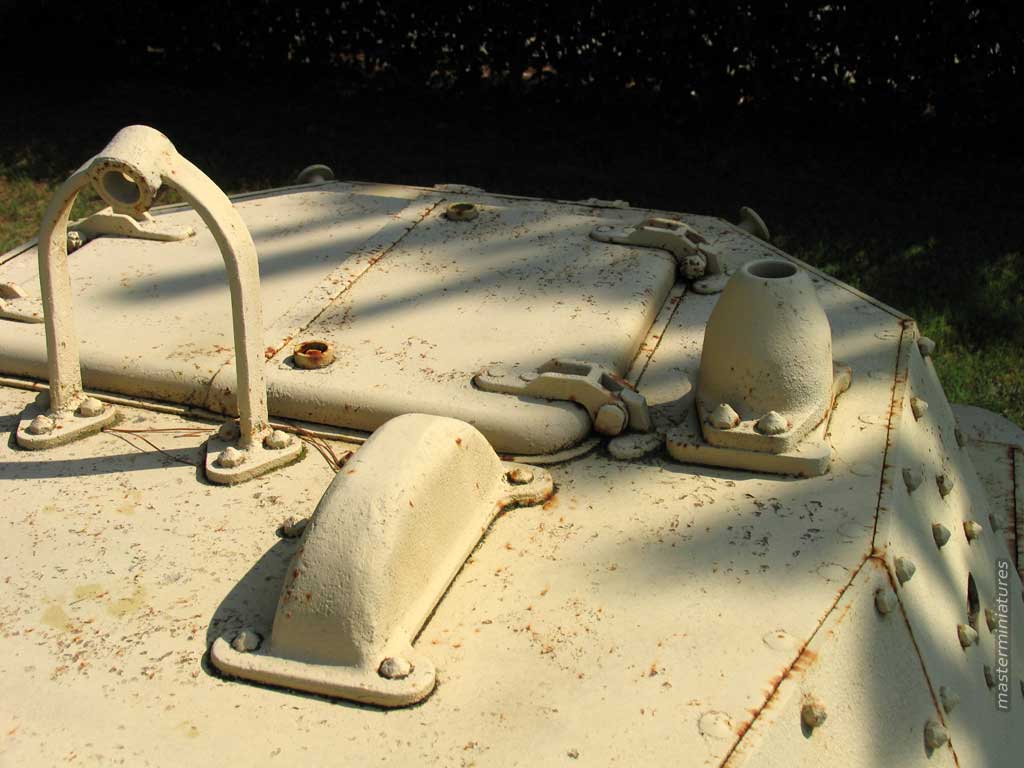
Primary armament
The main armament was the same as on the AB41 and on the AB42, the Cannone da 20/65 Breda Mod. 1935 developed as an anti-aircraft cannon, but also used with great success in an anti-tank role. It had a theoretical rate of fire of 500 rounds per minute but, due to the reduced space inside the turret, the practical rate of fire decreased to about 200 rounds per minute. The cannon and the coaxial machine gun were installed with a x1 sight produced by the San Giorgio optics factory of Genoa. The elevation was +18° while the depression was -9°. The Breda cannon could fire a variety of different shells mostly developed for anti-aircraft use. The ammunition used for anti-tank and support tasks were the Armor Piercing (AP) and High Explosive (HE) rounds of Italian production, with a 20 x 138 mm B caliber, but also those used by the German FlaK 38 cannon and the Solothurn S18-1000 anti-tank gun, which increased the anti-tank capacity of the cannon. With the Italian armor-piercing shells, the Mod. 1935 cannon could penetrate a 38 mm Rolled Homogeneous Armor (RHA) plate inclined at 90° at 100 m and a 30 mm armored plate at 500 m with the AP rounds. With German Pz.Gr. 40 ammunition, it could penetrate a 50 mm armor plate RHA inclined at 90° at 100 m and a 40 mm armored plate at 500 m.
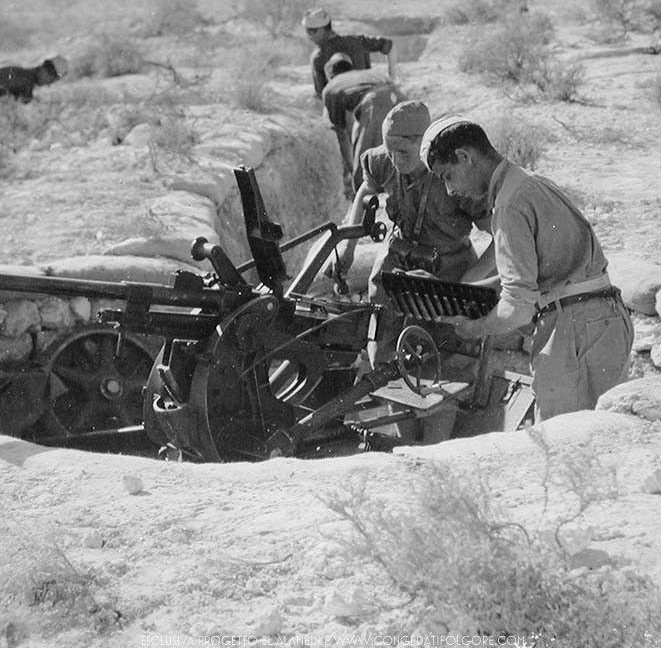
Secondary Armament
The secondary armament consisted, as on the AB41, of two Breda Mod. 38 8 mm caliber machine guns. The first one was coaxial to the cannon, on the left, and the second in a ball support on the rear of the vehicle. These machine guns were the vehicle version of the Breda Mod. 37 medium machine gun used by Italian infantry and had a top-mounted curved box magazine with 24 rounds and a fire rate of 350 rounds per minute due to the space of the turret.
The machine gun at the rear had a x1 San Giorgio optics on the right and could be disassembled from its spherical support and used in an anti-aircraft position mounted on the roof support.
A smoke grenade launcher was fitted to all vehicles on the right side of the engine compartment and a box containing the smoke grenades was added to the rear of the armored car, extending the shape of the vehicle by 20 cm. There are no photos of the grenade launcher or its ammunition, and it is not clear whether the last AB41s delivered to the Royal Army were also equipped with it or whether only the vehicles produced for the Germans after September 1943 had them mounted.
Ammunition
The ammunition on the AB43 consisted of 57 magazines with 8 rounds each, for a total of 456 20 mm rounds and 83 magazines of 24 rounds, for a total of 1,992 8 mm rounds. In the book “Italian Armoured & Reconnaissance Cars 1911-45”, however, Filippo Cappellano and Pier Paolo Battistelli state that the ammunition transported by the AB43 was reduced to 408 20 mm rounds, which meant 51 magazines, and 1,704 8 mm rounds, which meant 71 24-rounds magazines. This source has neither been denied or confirmed by other evidence. The magazines were placed in wooden racks, increasing the risk of fire. They were painted white on the sides of the hull. 24 20 mm magazines and 40 8 mm magazines were placed on the left side together with the commander’s intercom panel. The remaining 33 20 mm magazines and 45 8 mm magazines were placed on the right side. Many sources and videogames mention the use of 8-round magazines instead of the common 12-round magazines. It is unclear whether these magazines were actually produced or whether they were modified in the battlefields by the crews to facilitate loading into the narrow turrets of the AB series armored cars. Almost all AB43s were equipped with German-made 20 mm shells which increased the anti-tank performance and, in some cases, the guns were modified by German crews to load the 24-round magazines of the FlaK 38 anti-aircraft cannon.
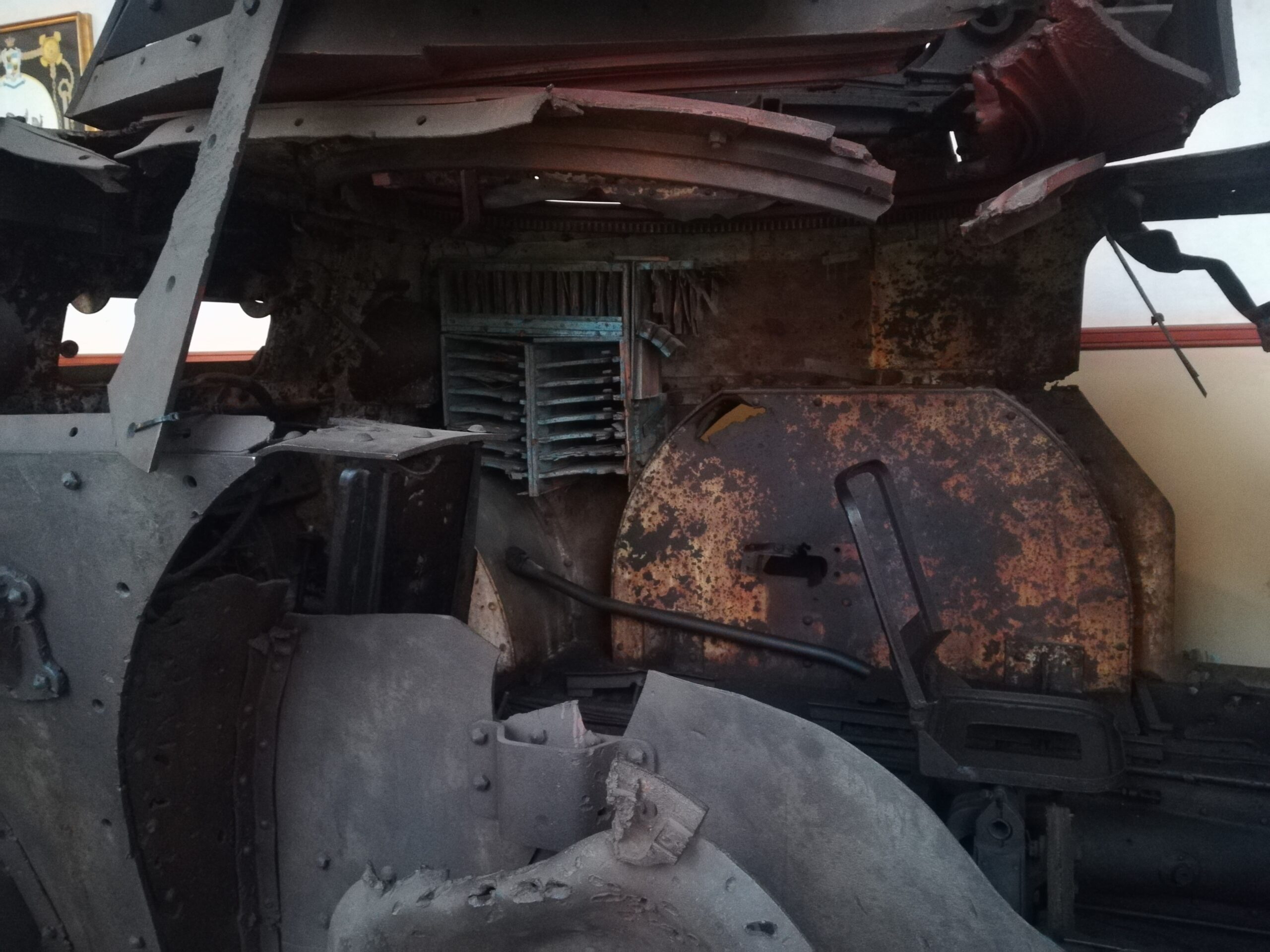
Although more spacious, there was no space for a loader in the single-seater turret and it was the commander of the vehicle who had to load the cannon in addition to commanding and firing. It was not rare, however, that one of the two drivers, when not driving and not using the radio, passed the magazines to the commander to speed up the loading.
Interior
The interior of the armored car remained unchanged between the AB41 and AB43. On the front was the 57-liter secondary tank, the steering wheel, with the dashboard on the right side. The front driver had a large front hatch and a periscope. On the right side, he had the gear lever with 6 forward gears, the hand brake, the intercom panel, and the directional control lever. On the left, at the top, there was a crank for the raising or lowering of the radio antenna. On the sides, the driver had two light fairings with armored hatches that could be raised or lowered by two handles.
Behind the driver, who had a seat with a backrest that could be lowered to facilitate entry, there were racks on the sides with ammunition for the cannon and machine guns. In the left wheel fairing was mounted the radio system, while on the right wheel fairing, at the bottom, there was a large box inside which generally carried the jack, tools for repair and maintenance of the vehicle, and personal belongings of the crew. However, it was not uncommon for crews to carry extra ammunition for the cannon inside the box. On the outside of the box were secured with straps one or two spare barrels for machine guns.
In the middle of the crew compartment was placed the single-seater turret with a folding seat and a support for the two firing pedals.
On the back, on the sides of the two ammunition racks, there were storage boxes on the left and two fire extinguishers on the right. On the back were placed the rear driver’s seat on the left and the rear gunner on the right.
Both sat on reclining seats to facilitate entry and exit from the vehicle. In the middle, between the two, was the transmission with the four-speed lever gear. The directional control lever was above the dashboard.
The steering wheel was secured with a butterfly screw that allowed for easy access to the interior of the vehicle. Behind the steering wheel, there was an engine cooling water tank and, on the right, the 20-liter reserve tank.
In front of the pilot there was a slit. On his right, in the middle, was mounted the panel of the intercom and finally, in front of the rear gunner was mounted the rear machine gun in a ball mount.
In the engine compartment, the engine was placed in the center, on the right was fixed the exhaust system and the fuel filter and finally, behind the engine were mounted two fans and the radiator.
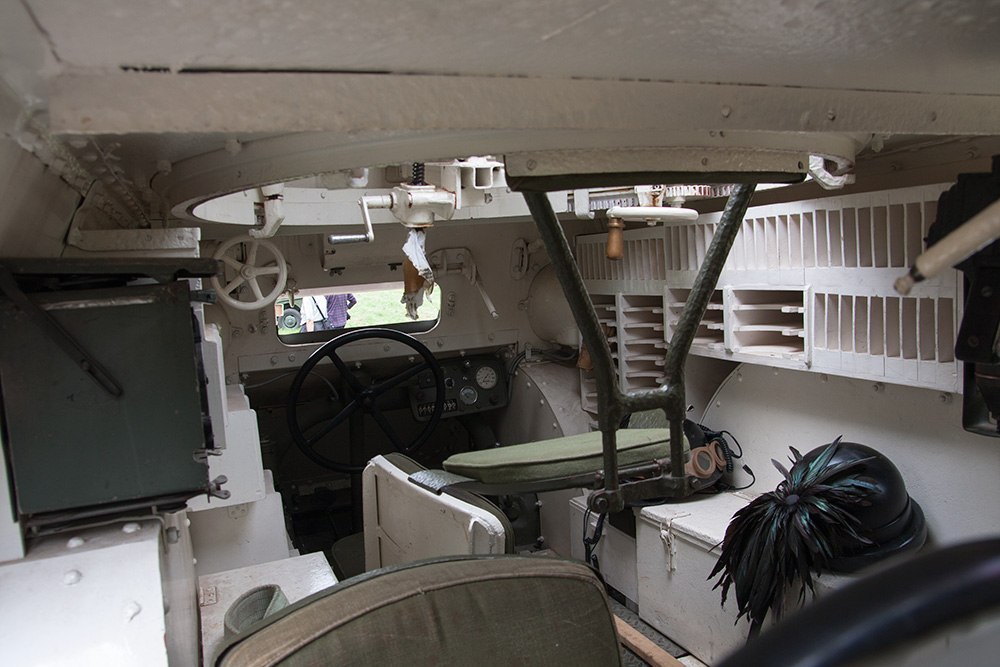
Crew
The crew consisted of four: the front driver, who also operated the radio when not driving, placed in the front; the vehicle’s commander, who was in the turret in the middle of the vehicle, who was overburdened with giving orders to the rest of the crew, operate the guns in the turret, turn the turret, and control the battlefield; the rear driver was on the left of the rear; and the machine gunner/radio operator to the rear driver’s right. These two crew members, due to the limited space available to them while driving off-road, bumped into each other continuously as well as bumping into the roof of the combat chamber. Throughout the war, the lack of a loader for the main gun negatively affected the performance of the armored car, significantly reducing the rate of fire of the 20 mm cannon.
Engine
The engine of the Autoblinda Mod. 1943 was the powerful FIAT-SPA ABM 3 6-cylinder water-cooled inline petrol engine giving 108 hp produced by the Società Piemontese Automobili (SPA), a subsidiary of FIAT.
Its volume was 4,995 cm³, the same as the ABM 2, but the maximum power was 108 hp (other sources round this number to 110 hp, others mention a maximum power of 115 hp) at 2,800 rpm.
The engine was paired with a Zenith type 42 TTVP carburetor housed in the back of the engine compartment.
The weight of the vehicle increased to 7.6 tonnes, bringing the maximum speed to 88 km/h on the road and about 35/40 km/h off-road. The range was increased from the AB41 ones, from 400 to 460 km.
On the AB43, as on the other armored cars of the AB series, there were three fuel tanks for a total of 195 liters. The main one, with 118 liters capacity, was placed between the crew compartment floor and the armored bottom of the armored car. The 57-liter secondary tank was mounted in front of the front driver above the steering wheel, while the 20-liters reserve tank was placed under the machine gun position in the rear.
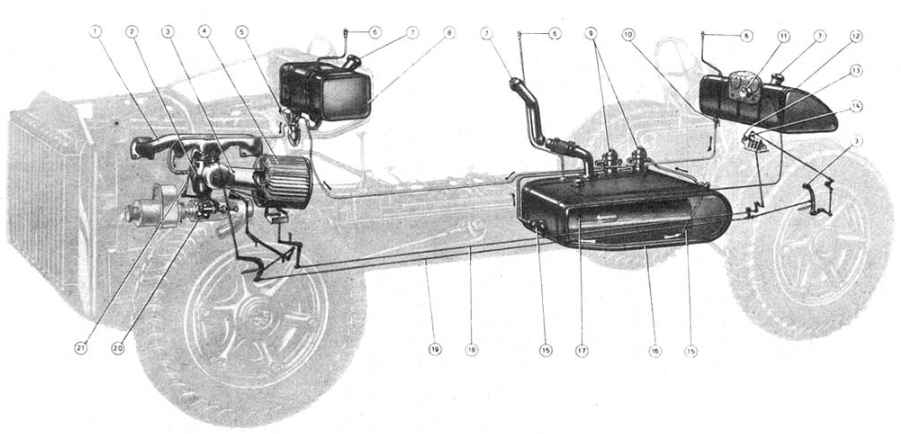
The crew compartment and engine compartment were not separated by an armored bulkhead, a very serious shortcoming because the reserve tank was placed right in front of the engine, and in the event of a fire in the engine compartment, the 20-liter tank immediately caused major fires inside the vehicle. To reduce the risk of fire, the crews began, during the North African Campaign, to not fill the rear 20 liter tank, preferring to carry a 20 liter jerry can outside the vehicle. Another problem found in the desert was the heat emitted by the engine forced the crews to keep the doors and the hatches open to allow them to properly breathe.
Radio system and electrical system
On the inside left fairing wall of the superstructure was the model RF3M radio system produced by the Magneti Marelli factory in Sesto San Giovanni near Milan, which was installed on all vehicles of the AB series from March 1941 onwards. It consisted of the transmitter and receiver placed one on top of the other. Underneath them, on the floor, were placed the power supplies. There were two pairs of headphones and microphones, one which was used by the front driver and the second by the rear machine gunner. A folding radio antenna with 6 beams was used. It could reach at most 7 meters high and had a radius of 60 km. When partially raised, however, it was 3 meters high and had a radius of 30 km. When the vehicle was moving with the antenna raised to 3 m the radius was about 20/25 km. This antenna could be lowered to 90°.
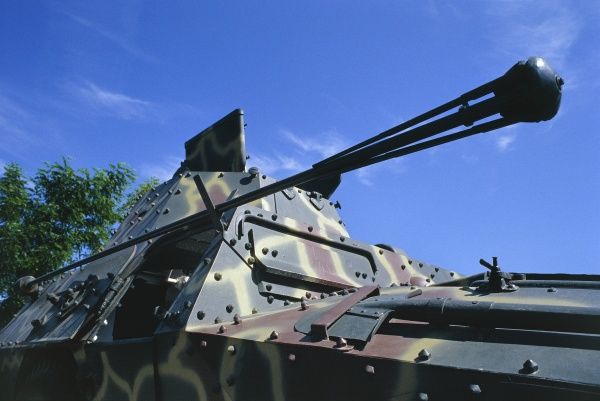
It is not clear whether during production or after delivery to the units, some AB43s received German Funkgerät or FuG radio equipment. It is unclear how many armored cars received the German radio equipment and whether the AB41s they captured received them as well.
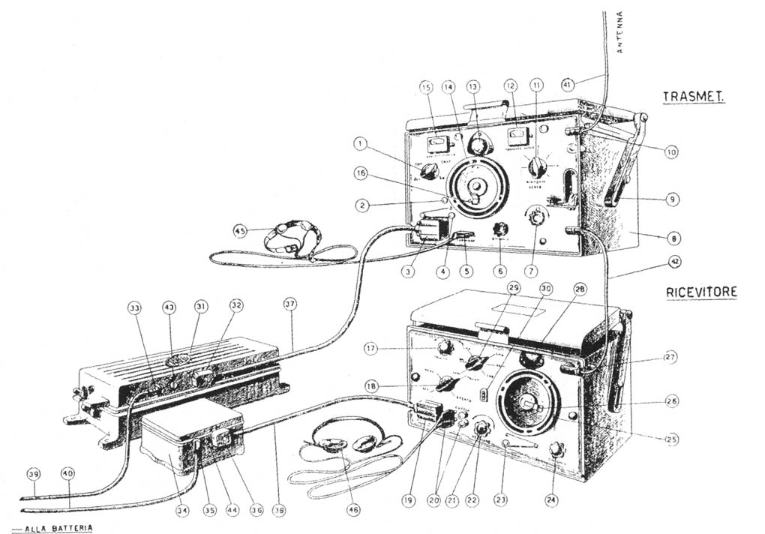
To operate the starter system, the four armored car headlights and the radio system, between the floor of the crew compartment and the armored bottom of the AB43 were a Magneti Marelli 3MF15 battery and four accumulators produced by the company in Sesto San Giovanni. Two were on the left side, under the gunner’s seat, connected to the starter system and headlights, while the other two accumulators were connected to the radio power supplies and mounted under the rear driver’s seat.
Mention should be made of the fact that there were no electric cables in the turret, so the triggers of the guns were connected to the commander’s fire pedals via ‘Bowden’ type cables, the same as on bike brakes. The only version of the AB that received an electrical cable inside the turret was the “Ferroviaria” version that had a headlight located on the right side of the turret that could be controlled from the inside.
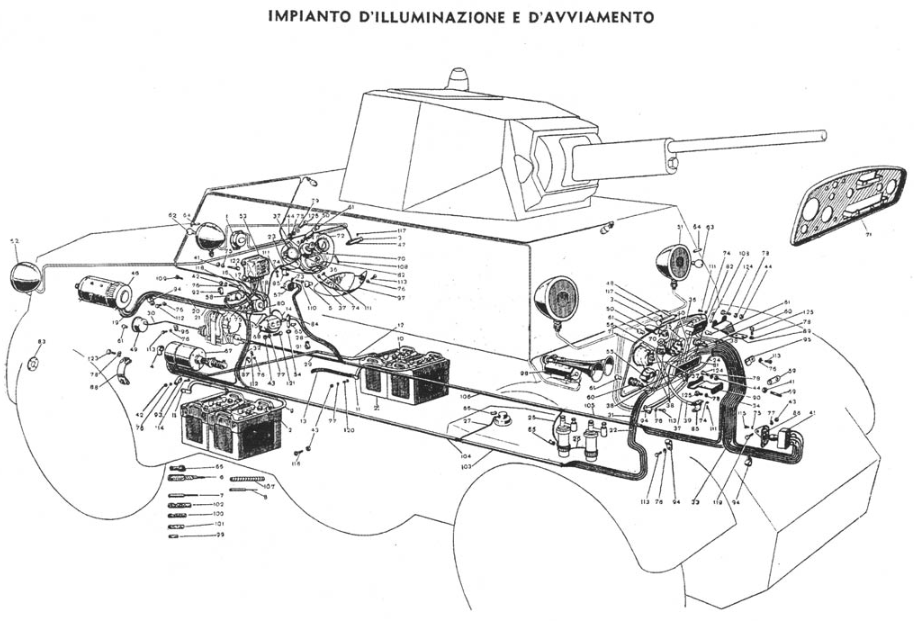
Tires
The tires used on the AB43 were the same used on the other vehicles of the AB series. They were produced by the Pirelli factory in Milan, as were almost all the tyres on Italian military vehicles. Pirelli produced several tires for the 60 cm (24″) rim used on the TM40, AB series armored cars, SPA-Viberti AS reconnaissance vehicles, and other transport vehicles.
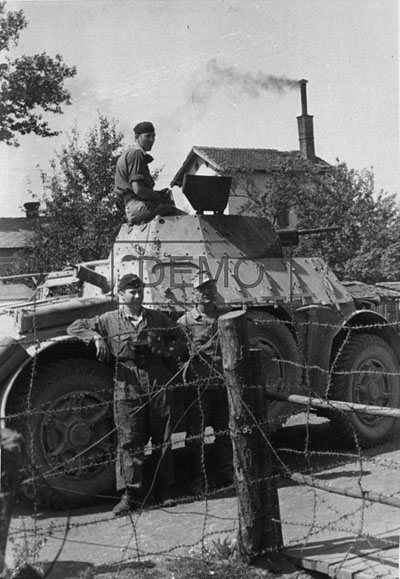
A whole range of tyres was produced for use on sandy soils but was never used on the Autoblinda Mod. 1943 since, by the time the AB43s came into service, the North African Campaign had been finished for several months.
For use on European terrains, such as Italy and the Balkans, the AB43s instead used the Pirelli “Artiglio” (Eng: Claw) 9 x 24″ (22.8 x 60 cm), “Artiglio a Sezione Maggiorata” (Eng: Claw With Increased Section) 11.25 x 24″ (28.5 x 60 cm) with larger treads for better grip and finally, from 1942 onwards, the Pirelli “Sigillo Verde” (Eng: Green Seal) tires. Due to the troublesome supply lines of the Wehrmacht, the crews were not always supplied with spare wheels and the AB series armored cars were sometimes fitted with the AS42’s tires and vice versa. Some photographs show armored cars with non-standard tires of a suitable size.
Service history
Wehrmacht
The Germans began production of the vehicle in November 1943, renaming it Beute Panzerspähwagen AB43 203(i) (Eng. Captured Armored Reconnaissance Car AB43 203 Italian) and used it in Italy and the Balkans, mainly for anti-partisan duties.
In the days of the Armistice of September 1943, the 65. Infanterie-Division captured or received 10 AB41 armored cars and, in the following months, received two AB43 and 6 Lancia Lince. These 18 armored cars were used in the Battle of Anzio until May 1944 and then in Rome. After June 1944, the division was employed in anti-partisan actions in Tuscany and Emilia-Romagna, where the division committed several war crimes against the Italian civilian population. In April 1945, it participated in the Battle of Bologna with its last armored cars, including an AB43. On April 22, it surrendered to the Allies on the banks of the River Po. The 334. Infanterie-Division received nine AB41 and AB43 armored cars which were used for the defense of the Gothic Line and later in the Battle of Bologna, when the division surrendered to the Allies.
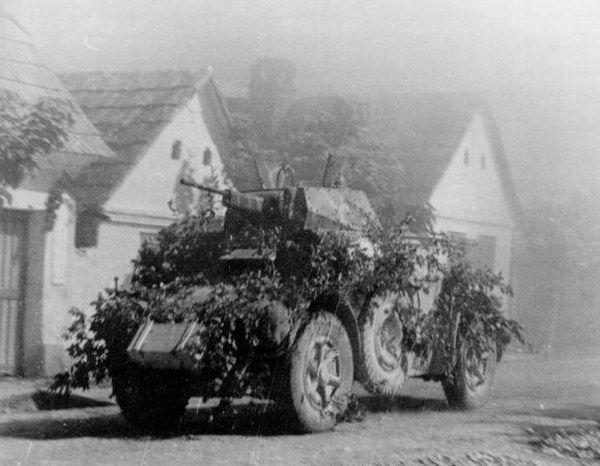
The 356. Infanterie-Division used five AB41 and AB43 armored cars on the Gustav Line and on the Gothic Line. The 362. Infanterie-Division employed a total of six AB41 and AB43 at Anzio. One was employed in Piedmont where, in April 1944, it took part in a massacre of Italian civilians. After the retreat from Anzio, it was used on the Gothic Line and then in Florence and Bologna, where it surrendered on April 23rd to the Allies. The MG-Bataillon “Feldmarschall Kesselring” used 16 AB43s. The 90. Panzergranadier Division used many AB series armored cars and, in January 1945, it still had 15 AB43s available and also the prototype of the AB43 ‘Cannone’. The division was completely annihilated while covering the retreat of the other German forces in Bologna before the battle of April 1945. The 162. ‘Turkistan’ Infanterie-Division received six AB43s and six Lancia Lince, the last ones in April 1945 before surrendering in Padova after the signing of the Resa di Caserta surrender on April 29, 1945. The 8. Gebirgs Division employed two AB43s in the defence of the mountain passes in the Apennines until it surrendered to the Allies on May 8, 1945. The 42. Jäger-Division received at least three AB43s in July 1944 and used them during the Ronchidoso Massacre in October 1944, when 66 Italian civilians were executed.
The 4. Fallschirmjäger-Division received some AB41, AB43 and Lancia Lince and was sent in January 1944 to fight the Allies in the Battle of Anzio. It withdrew in June 1944, first to Rome, then to Siena and then to Florence, where we know that two vehicles of the 4. Fallschirmjäger-Division fought on August 18, 1944.
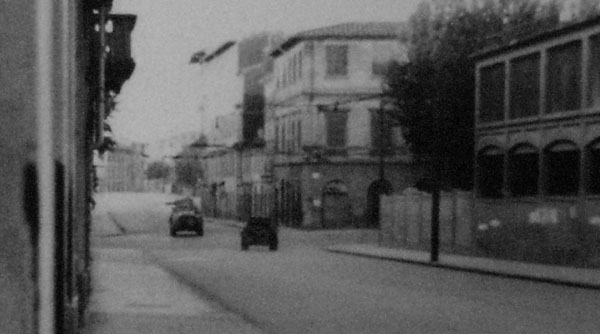
After this battle, the division fought against the British 8th Army in Rimini in August, but was forced to retreat to Bologna in December of the same year. In April 1945, it began its retreat again, fighting in Ferrara, Verona and Bolzano, until it surrendered on May 2, while trying a desperate escape from Bolzano to the city of Vicenza. The Fallschirmjäger-Division had its Italian armored cars driven by members of the Raggruppamento paracadutisti “Nembo” (Eng. “Nembo” Paratroopers Group), Italian paratroopers loyal to Benito Mussolini who fought alongside the Germans until September 1944, when the group was disbanded because of the losses suffered.
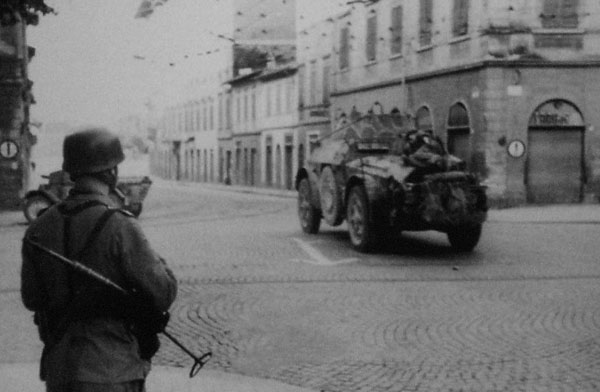
The SS-Polizeiregiment “Bozen” which, since February 1944, was stationed in the province of Belluno, made eighty-five anti-partisan operations between the Biois Valley and Mount Grappa between March and December. Between August 20 and 21, the men of this battalion under the command of Marshal Erwin Fritz were involved, together with some units of the Fallschirm-Panzer-Division 1 “Hermann Göring” and of the SS-Gebirgs-Kampfschule, in the Massacre of the Biois Valley. In that operation, they used at least eight armored cars, one Sd.Kfz. 232 and seven armored cars of the AB series, of which at least a pair were AB43.
The 12. Panzer Abteilung Besondere Zwecke Verordnung (Eng. Tank Battalion for Special Purpose) of the Panzergrenadier-Division ‘Brandenburg’ received some AB43 which were used in the Balkans for anti-partisan duties.
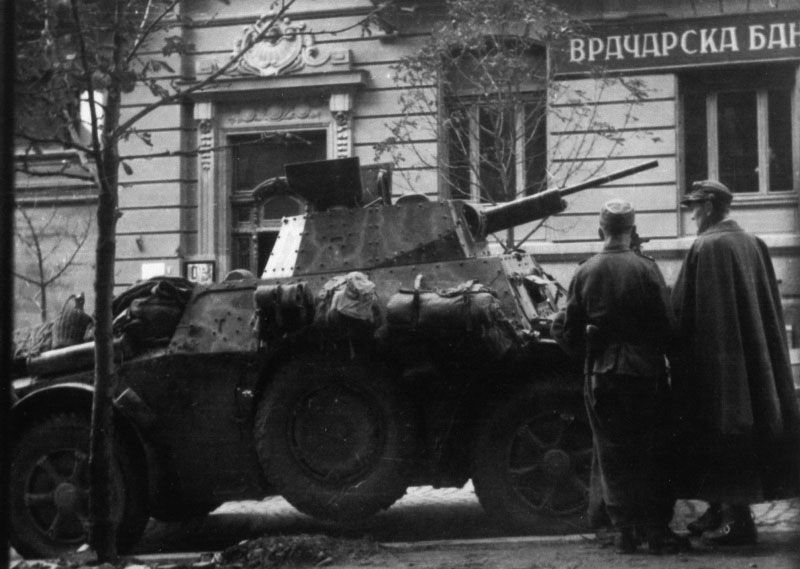
The last German unit known to have used AB43s was the SS-Karstwehr-Bataillon, composed of Italians of German origin and Croatian, Ukrainian, and Serb soldiers, which received some AB41 and AB43. The division was later renamed the 24. Waffen-Gebirgs ‘Karstjäger’ Division der SS and employed in anti-partisan actions in the Italian region of Friuli-Venezia Giulia.
Italian Partisans
The armed resistance of the Italian partisans began on September 8, 1943, when Roman citizens took to the streets to defend their city from German soldiers. Many of them were badly armed and in some cases their only weapons were the stones with which the streets of Rome were paved.
The Comitato di Liberazione Nazionale or CLN (Eng. National Liberation Committee) was founded on September 9, 1943 in Rome and, in the following months, the first cores of resistance were formed in the part of Italy under Nazi-Fascist control.
The partisan units were commanded by the CLN but were affiliated to several clandestine political parties.
The Brigate Garibaldi, the most numerous, was affiliated to the Partito Comunista Italiano or PCI (Eng. Italian Communist Party) and numbered 575 throughout the north of the Italian peninsula. The Brigate Autonome (Eng. Autonomous Brigades) were the only ones not affiliated to any party or political ideology, often founded by former soldiers of the Royal Italian Army who escaped capture, however, they followed the directions of the CLN. They numbered a total of 255 units. The Brigate Giustizia e Libertà (Eng. Justice and Freedom Brigades) were affiliated to the Partito d’Azione (Eng. Action Party), a liberal-socialist political party and numbered 198 units. The Brigate Matteotti belonging to the Partito Socialista Italiano or PSI (Eng. Italian Socialist Party) numbered 70 in total. Finally, the Brigate del Popolo (Eng. People’s Brigades), that were affiliated to Democrazia Cristiana (Eng. Christian Democracy) political party, numbered 54. There were also many other minor partisan brigades such as the Brigate Bruzzi of anarchist ideology, the Brigate Badogliane (named after Prime Minister Pietro Badoglio) of monarchist ideology and the Brigata ‘Bandiera Rossa’ (End. ‘Red Flag’ Brigade) following the Trotskyist ideology.
The Partisan Brigades were structured in a scheme very similar to that of an army: partisan groups of 10 to 20 men formed a squadra (Eng. team), three teams formed a compagnia (Eng. company), and three companies formed a battaglione (Eng. battalion). Three battalions formed a brigata that could have between 270 to 540 partisans, and finally three brigades formed a divisione (Eng. division) that could reach 1,600 partisans. Their equipment varied greatly. At the beginning of the resistance, the only weapons that civilians who joined the resistance possessed were hunting rifles or pistols, while the former soldiers of the Royal Army had their personal weapons. During the almost 20 months of resistance, the partisans captured many weapons and vehicles from the Nazi-Fascists. The Allies also provided the partisans with weapons and ammunition. A general insurrection was organized by the CLN for April 25, preceded by a huge strike of the workers in the factories that produced military equipment. About 100,000 partisans took an active part in the insurrection, half of them in Piedmont. In Lombardy, about 9,000 partisans took part in the liberation of the main cities, the most important of all being Milan, where the partisan troops, commanded by the future President of the Italian Republic Sandro Pertini, fought fiercely against the last Italian soldiers loyal to Mussolini and the few German soldiers still in the city.
The battle was fought by the partisans of the 81ª Brigata Garibaldi Volante “Silvio Loss” (Eng. 81st Flying Garibaldi Brigade), a division with about 1,400 partisans who, before the insurrection, had participated in the foundation on June 11, 1944, and in the defense of the Partisan Republic of Valsesia, one of the twenty-four autonomous republics founded by the partisans on the territories torn from the Repubblica Sociale Italiana or RSI (Eng. Italian Social Republic), the republic founded by Benito Mussolini after the armistice of September 8, 1943. The Republic was dependent on the CLN and was situated between the Piedmont region and the Lombardy region. The partisans of the division, at an unspecified moment, probably a few days before the battle, took possession of an AB43 which they used after having painted on the sides with white paint the name of the division and on the front the inscription ‘W LA LOSS’. It was used to free the city and, the next day, it was used together with other vehicles in the partisan parade in the streets of the city.
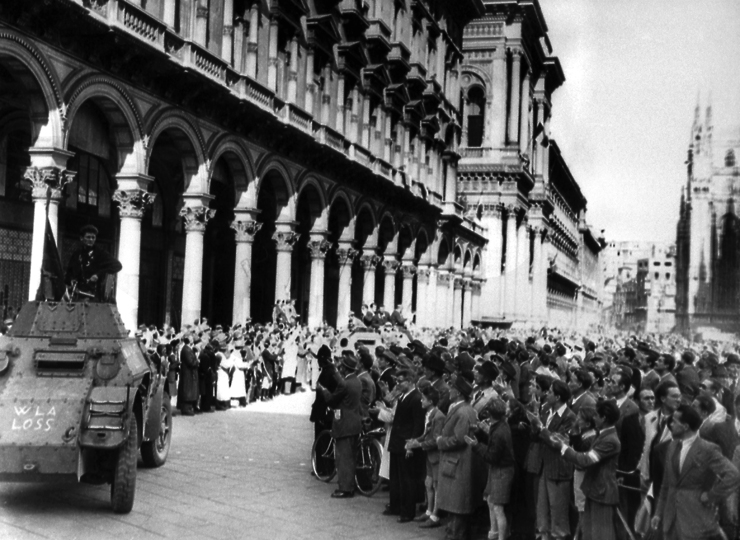
The 6ª Brigata d’Assalto Garibaldi ‘Nello’ (Eng: 6th Garibaldi Assault Brigade), so called in honor of the partisan officer Nello Olivieri (1914-1944) who was active in the region of Alagna Valsesia between the provinces of Vercelli and Novara in Piedmont was able to take possession, in the last days of the war, of six AB43 armored cars of which three without turret.
It seems that the vehicles were requisitioned from the Ansaldo factory in Novara where they had not yet been completed and lacked, among other things, a camouflage scheme and were covered with simple anti-rust primer. Together with the armored cars of the ‘Loss’ were used to liberate the cities of northern Italy.

After the War
After the war, the AB43, together with other Italian vehicles of the Second World War, went to arm some units of the Polizia di Stato (Eng. State Police) and the Arma dei Carabinieri (Eng. Arm of Carabiners) in an unknown number of vehicles.
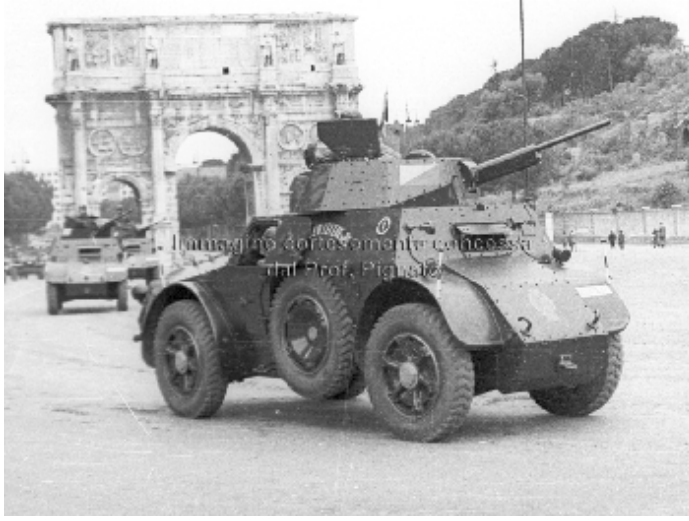
The use of armored vehicles was required in the period immediately after the war because of the potential violence that could develop in any intervention, on the occasion of strikes, demonstrations or factory seizures by workers or the fight against anti-Republican movements, and this without counting the continuous threat of an insurrection by the thousands of members of the Partito Comunista Italiano. Since the Carabinieri were not sufficient for the needs and the Italian state wanted to avoid as much as possible the use of the new Esercito Italiano (Eng. Italian Army) to quell these demonstrations, it was indispensable that the Police had the suitable instruments to face any eventuality. For this reason, many Italian cities (especially where there were factories with many workers), first of all Turin, Milan and then Rome, Bologna, Udine and Genoa, many armored vehicles, even tracked ones, were supplied to the police.
The few surviving armed and armored vehicles of the former Regio Esercito, of the Esercito Nazionale Repubblicano (Eng. Republican National Army) and the Guardia Nazionale Repubblicana (Eng. Republican National Guard) of the Italian Social Republic, even if by now obsolete for wartime use, could still be used for public security roles. In this way, with the consent of the USA, the clauses of the Peace Treaty which forbade the Italian Army from owning many tanks were circumvented. If necessary, these armored vehicles, although obsolete, would still be an aid at the time of the dreaded Communist coup d’état. After these first years, the need for armored vehicles disappeared. Even in the most turbulent years of the protests of 1968, demonstrators lined up in front of the forces of law and order and, however fierce they were, they could be faced with riot gear.
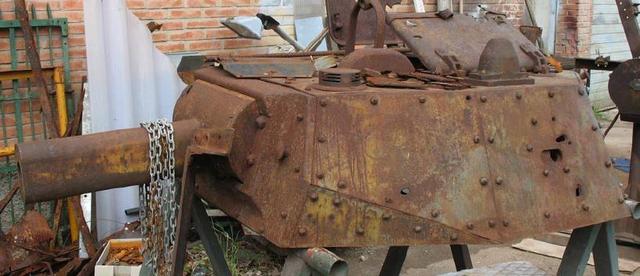
In the early 1950s, the L3 and L6/40 tanks were withdrawn from the police service, as were the few M13/40s. Between 1954 and 1956, the Italian production armored cars, such as the AB41, AB43, Lancia Lince and SPA-Viberti AS42 were withdrawn. British and American production vehicles, such as the Humber Mk II, Bren Carrier and Staghound T17E1 were still used for anti-terrorism and airport patrols until the first half of the 1970s. The Allied vehicles were replaced by the FIAT 6614 armored cars, which are still used today for counter-terrorism tasks but whose use, by law, is subject to very strict constraints.
Not much is known about the service of the AB43s. After the war, they were overhauled in the FIAT factories in Turin that also managed to repair some damaged vehicles.
Together with the AB41s, they formed a Reparto Celere (Eng. Fast Department) in Turin and the Nucleo Celere di Pubblica Sicurezza (Eng. Cast Core of Public Security) in Rome until 1954 or 1955. No other police units are known to have used AB43s. Some others were put in service with Reparti Mobili (Eng. Moving Departments) of the Carabinieri, repainted in NATO green. Those ABs were still in service until 1953. For some years after the war, the Italian Army used some AB43 for training and eight AB43 were built after the war by the FIAT factory in Turin as AB43 ‘Ferroviaria’ and used until 1955 in the Railway Engineering units.
The AB43s in service with the State Police were all withdrawn from service in 1955 after many years of inactivity, interspersed only with rare exercises or exits to temporarily guard some sensitive targets.

Versions – AB43 ‘Cannone’
In the early months of 1943, Ansaldo proposed a new version of the AB armored car series armed with a 47 mm cannon called AB43 (also known as the AB43 ‘Cannone’). The AB41 superstructure was modified with straight sides and removing the rear machine gun. The larger and shorter turret was armed with a powerful 47/40 Mod. 38 cannon, the same as on the M15/42 medium tank. The ammunition capacity was 63 rounds for the cannon. Due to the weight increase to over 8 tonnes, the same 108 hp engine on the AB42 was installed, which allowed the armored car to reach a speed of 88 km/h. Approved in May 1943, the armistice blocked the plans of the Royal Army, which had ordered 360.
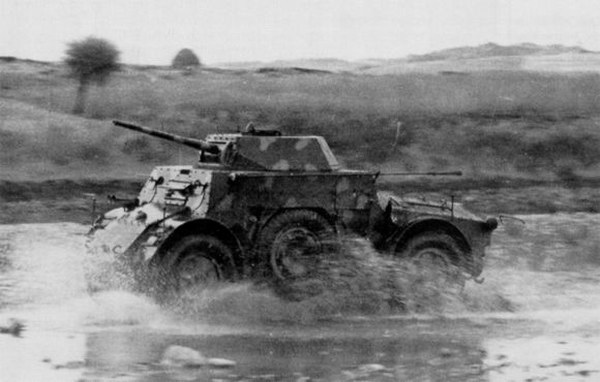
Surviving vehicles
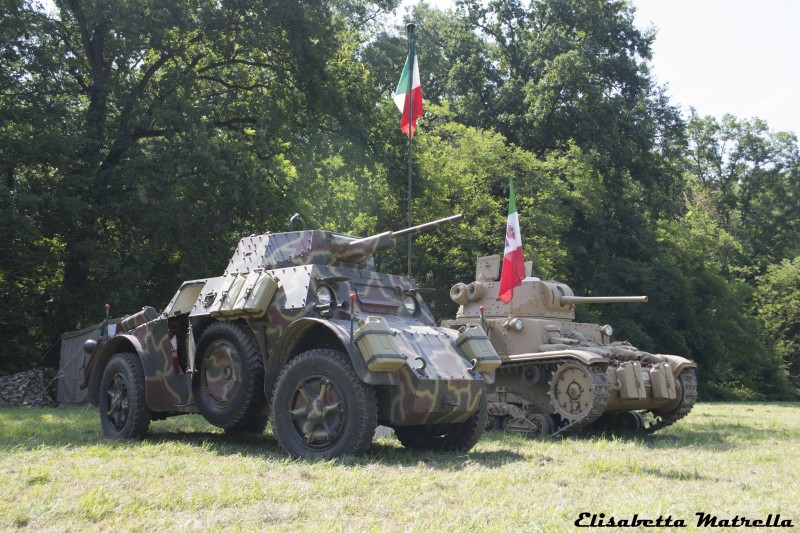
Six AB43s survive to this day, one at the Museo Storico della Motorizzazione Militare in Cecchignola near Rome, one in poor condition at the Museo Storico dell’Arma di Cavalleria in Pinerolo, one at the Museo di Guerra per la Pace Diego de Henriquez in Trieste and the last AB43 at a museum is an armored car used by the State Police, now under renovation and which will be exhibited at the Museo Memoriale della Libertà di Bologna. An AB43 is on display as a monument at the Grosseto Barracks “Beraudo di Pralorno”, headquarters of the 3º Reggimento “Savoia Cavalleria”. Only one AB43 is in running condition, often presiding over many exhibitions and historical reenactments throughout Italy. It is owned by Fabio Temeroli and exhibited in his private collection in the Republic of San Marino.
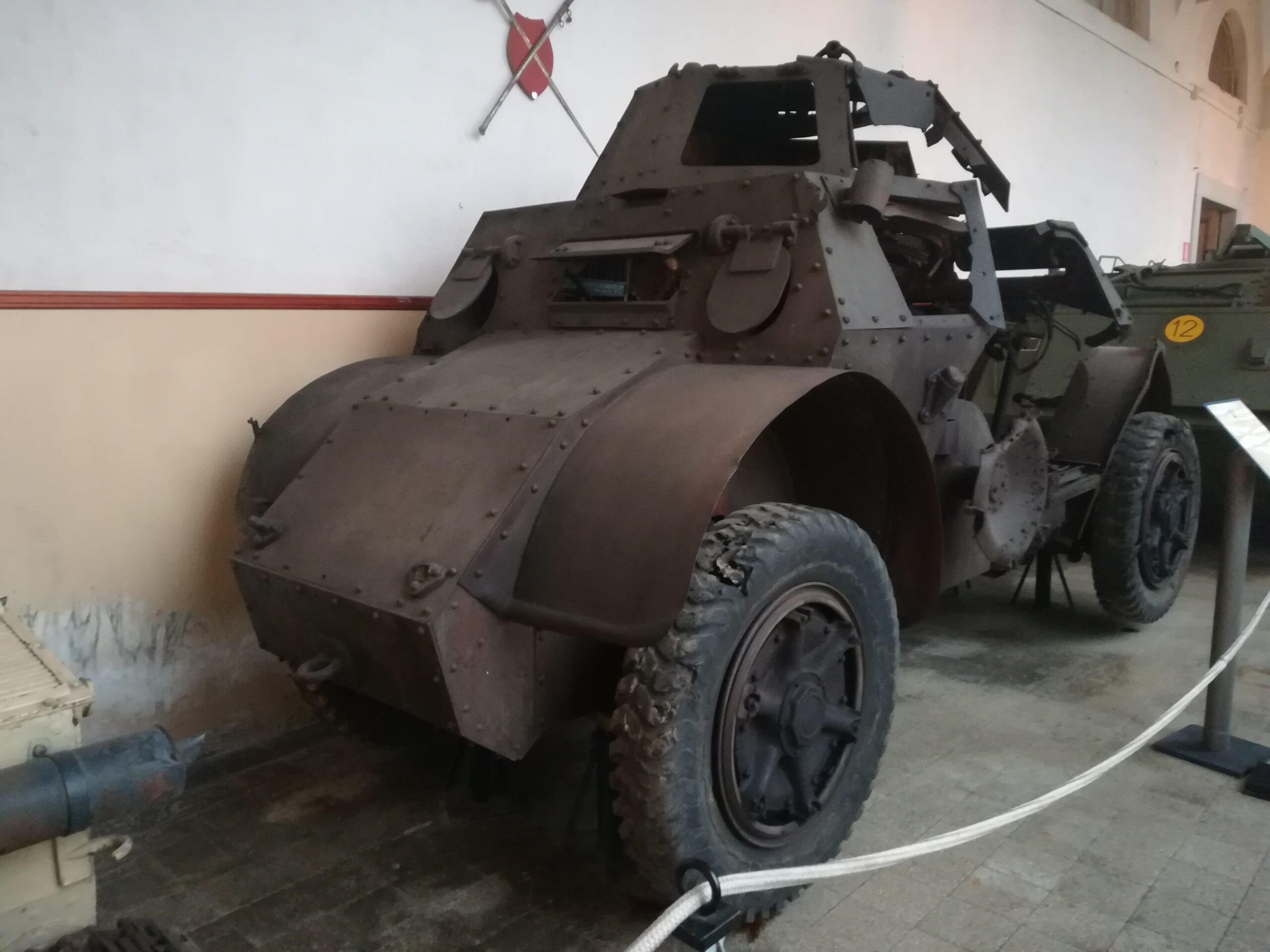
There is an AB43 ‘Ferroviaria’, the only ‘Ferroviaria’ armored car of the surviving AB series, on display at the Museo Storico della Motorizzazione Militare in Cecchignola.
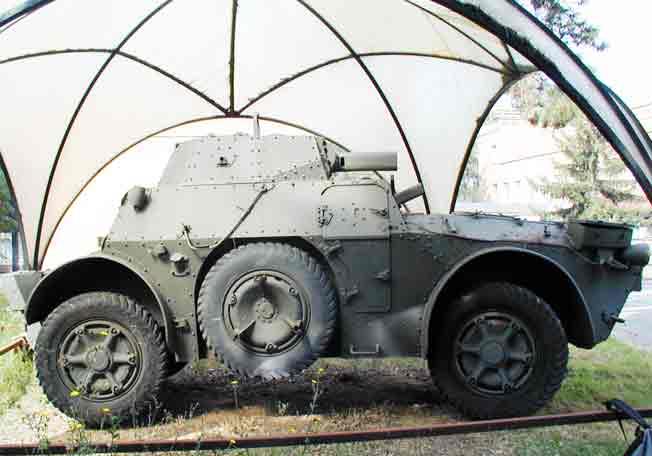
Conclusion
The final version of the AB armored car family was mounted on the chassis of the AB41, but many defects were eliminated thanks to the new engine and turret inherited from the AB42. It was a very successful vehicle, appreciated by German crews during the war and by Italian policemen after the war. Unfortunately, the few examples produced were not able to satisfy the number of armored cars needed by the German Army to form autonomous reconnaissance companies. In fact, these effective armored cars were always forced to cooperate with Lancia Lince and AB41 armored cars that were not able to fill the gap.
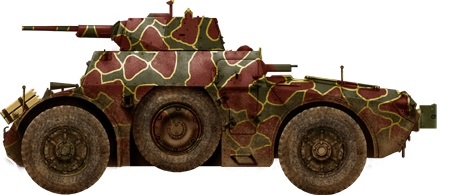
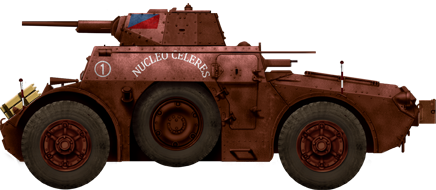
AB43 specifications |
|
| Dimensions (L-W-H) | 5,20 x 1,92 x 2,30 m |
| Total Weight, Battle Ready | 7.6 tons |
| Crew | 4 (driver, gunner/vehicle commander, loader and rear driver) |
| Propulsion | FIAT-SPA 6 cyl, 108 hp with 195 liters tank |
| Speed | 88 km/h |
| Range | 460 km |
| Armament | Breda 20/65 Mod.1935 with 456 rounds, two Breda 38 by 8x59mm machine-guns with 744 rounds 2040 rounds |
| Armor | hull 9 mm front, sides and rear. Turret 22 mm front, 8.5 mm sides and rear mm |
| Total Production | 102 with 20 mm cannon |
Source
Gli autoveicoli da combattimento dell’Esercito Italiano – Nicola Pignato e Filippo Cappellano.
Le autoblinde AB 40, 41 e 43 – Nicola Pignato e Fabio D’Inzéo.
Italian Armoured & Reconnaissance Cars 1911-45 – Filippo Cappellano & Pier Paolo Battistelli
Panzer Tracts No. 19-2: Beute-Panzerkampfwagen – Thomas Jentz, Werner Regenberg
I Mezzi Corazzati Italiani della Guerra Civile 1943-1945 – Paolo Crippa
Italian Tanks and Combat Vehicles of World War II – Ralph A. Riccio
